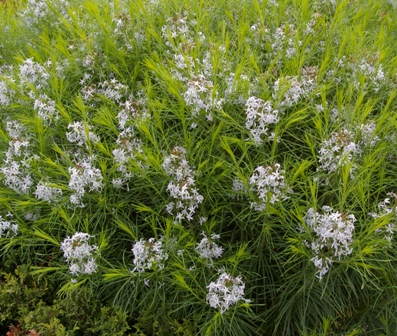January 10th……I want to plant something!
Here it is, not even mid-winter and the urge has hit me. Why? It’s not as if I don’t have anything growing right now. The Christmas Paperwhite Narcissus are in full bloom through out the house. I kind of over bought on those bulbs. They were so big and beautiful. I got them started in my cold house as soon as I bought them. Some went in soil and others in cache pots with gravel and water. The result was lovely but too much for my small house, so 4 pots went to friends and neighbors.
The The Amaryllis are poking along. I ordered them late and tried some dwarfs this year. So far they are disappointing but I’m willing to wait. Out on the back porch, 3 pots of tulips are well rooted and properly cooled. They’ll begin growing as soon as I bring them into the warmth of the house. I expect spectacular reds and purples to brighten the late February days.
Going back to my question. Why this urge to plant? I blame it on the temperature. I live in outer SE Portland, so the big blow of early January put us in hibernation mode. When the temperature jumped up to 53 degrees, my inner gardener woke up with a start.
 What to plant? I have 3 empty pots on my front porch looking drab and forlorn. I could fill them with violas or primula. These plants need weekly feeding to keep them blooming. Am I willing to do that all winter and spring? Probably not.
What to plant? I have 3 empty pots on my front porch looking drab and forlorn. I could fill them with violas or primula. These plants need weekly feeding to keep them blooming. Am I willing to do that all winter and spring? Probably not.
My vision was something vigorous and evergreen that I could enjoy out my window. I decided that a cedar hanging box full of ivy would do it. It might also entice spring robins to nest later on. Now before you start typing a reply about invasiveness, rest assured, the plants will never touch the ground. In fact, the plants I’ll use will come out of my yard where they have escaped the constant rouging out process.
I’ll start the planter under my grow lights indoors to speed things up. The plants will not go full blast until spring really sets in, but they’ll have a head start, and my primal planting urge will be under control….for a little while.
Here are some hints for winter planting.
1) Be realistic; ask yourself what you have already available in containers and plants; how much work do you really want to do?
2) Cast your net wide; try something you’ve never tried before, like lettuce or herb seeds, forcing bulbs, or blooming indoor plants ( try African violets or Cape primroses– Streptocarpus, Begonias are also satisfying to grow at this time of year.
3) Use fresh potting soil and some time release fertilizer, don’t over water.
4) If you can, start out door plants inside or at least in a cold frame. Bottom heat will make them root faster.
5) Be patient; out door plants especially will be slow during cold weather.
6) If you can’t be patient, shop for instant gratification. Many garden centers have stocked lush house plants and vigorous out door plants just to satisfy your planting urge.
ENJOY! And take heart, planting time will be here soon.
Nadine




 Six years ago, I bought Garrya elliptica ‘James Roof’ to go into the native plant border at my home. I was pleased that it grew quickly and created a thick screen between me and the driveway next-door even if its habit was ungainly. Branches curved in a drooping fashion back down to the ground. Others twisted themselves around neighboring branches as if they were seeking a way out of the evergreen tangle. Because much of the growth was lateral and downward, I began to contemplate what I could do to encourage upward growth. I wanted to see the tassels drape the shrub like tinsel on a Christmas tree.
Six years ago, I bought Garrya elliptica ‘James Roof’ to go into the native plant border at my home. I was pleased that it grew quickly and created a thick screen between me and the driveway next-door even if its habit was ungainly. Branches curved in a drooping fashion back down to the ground. Others twisted themselves around neighboring branches as if they were seeking a way out of the evergreen tangle. Because much of the growth was lateral and downward, I began to contemplate what I could do to encourage upward growth. I wanted to see the tassels drape the shrub like tinsel on a Christmas tree.











